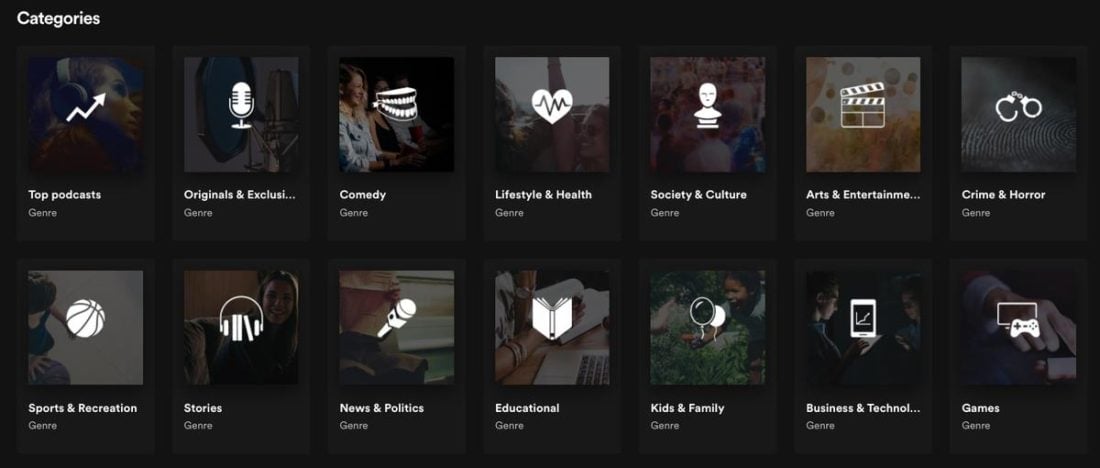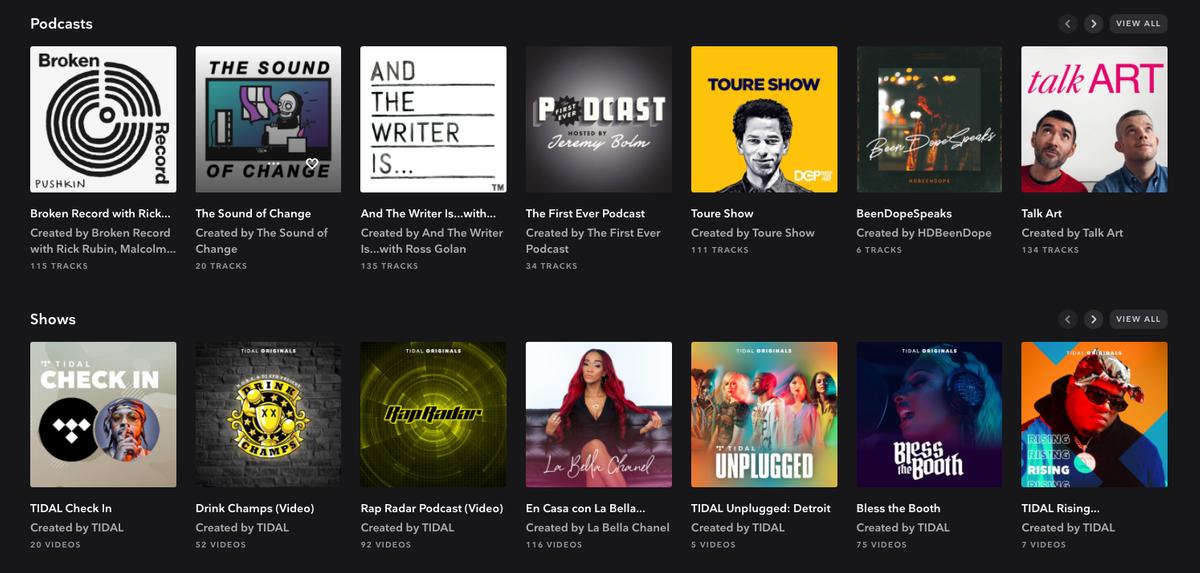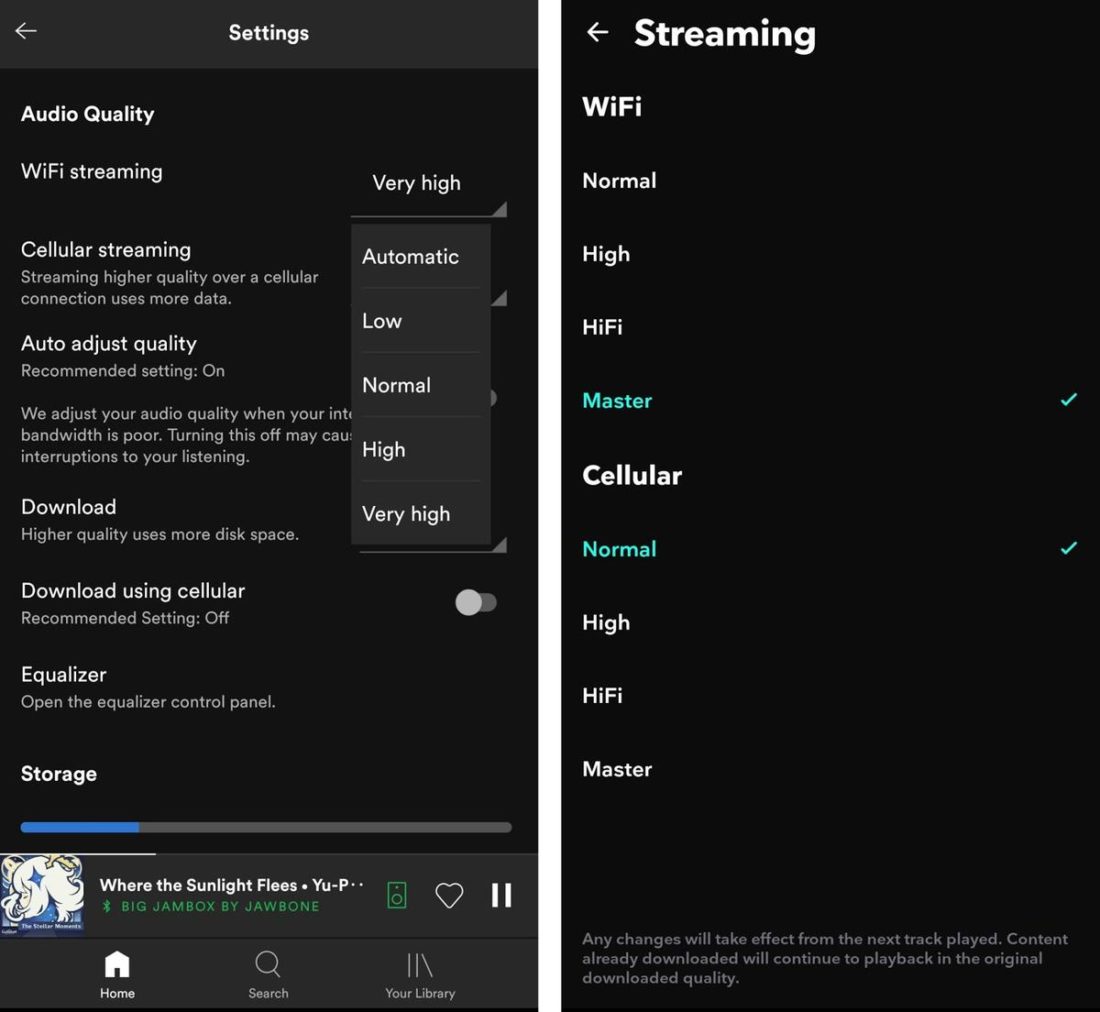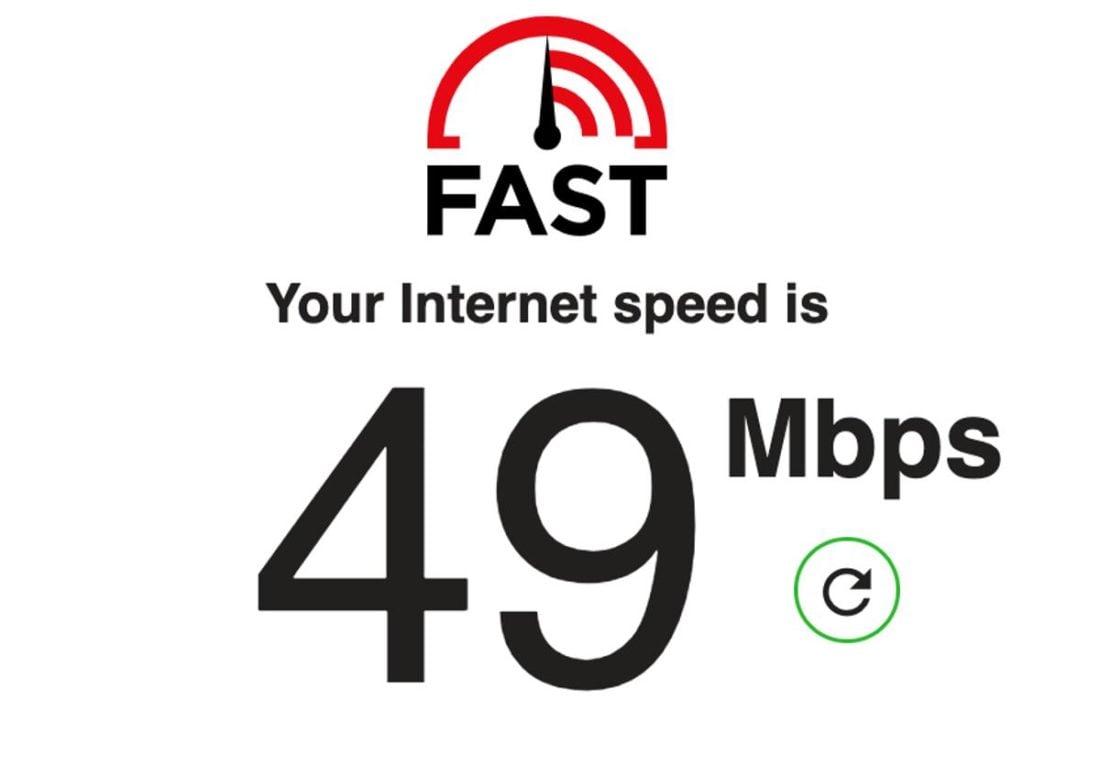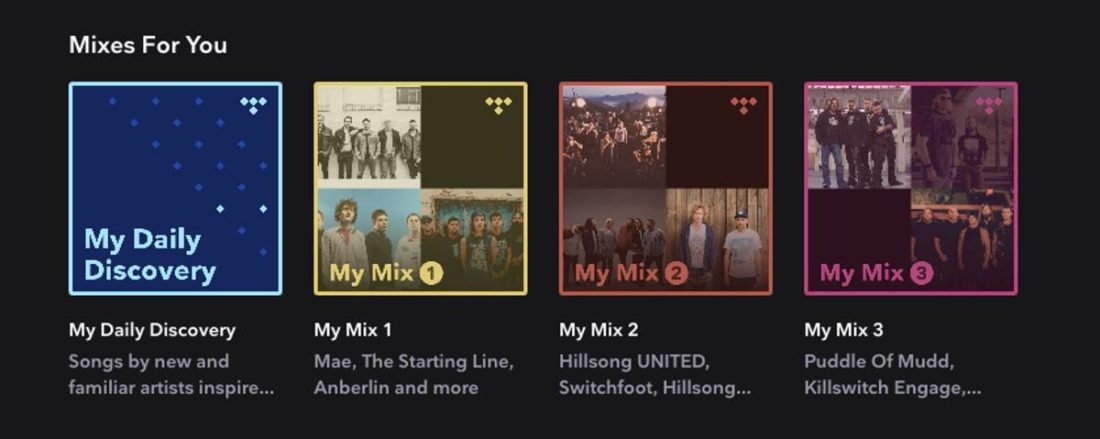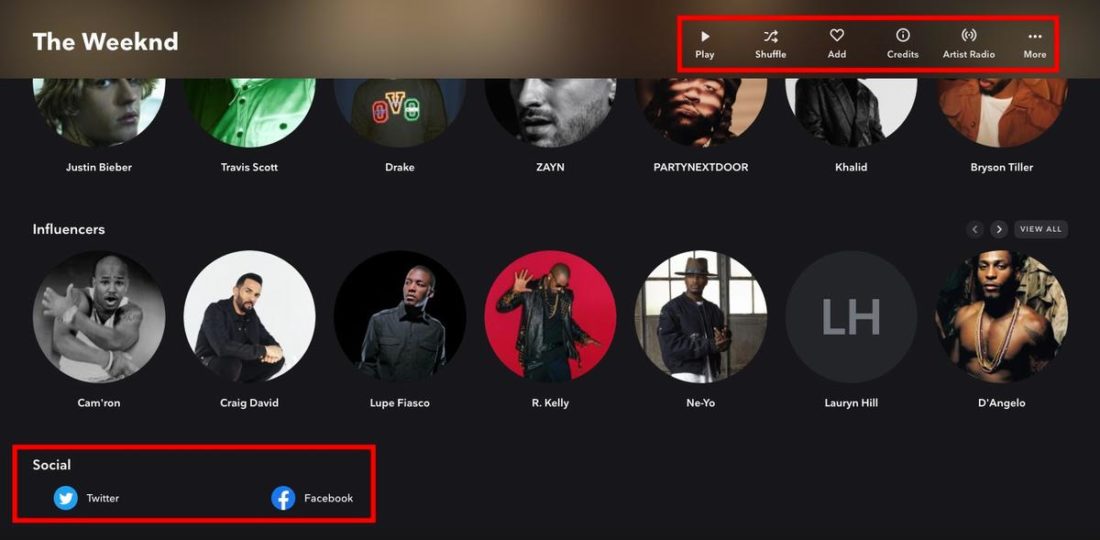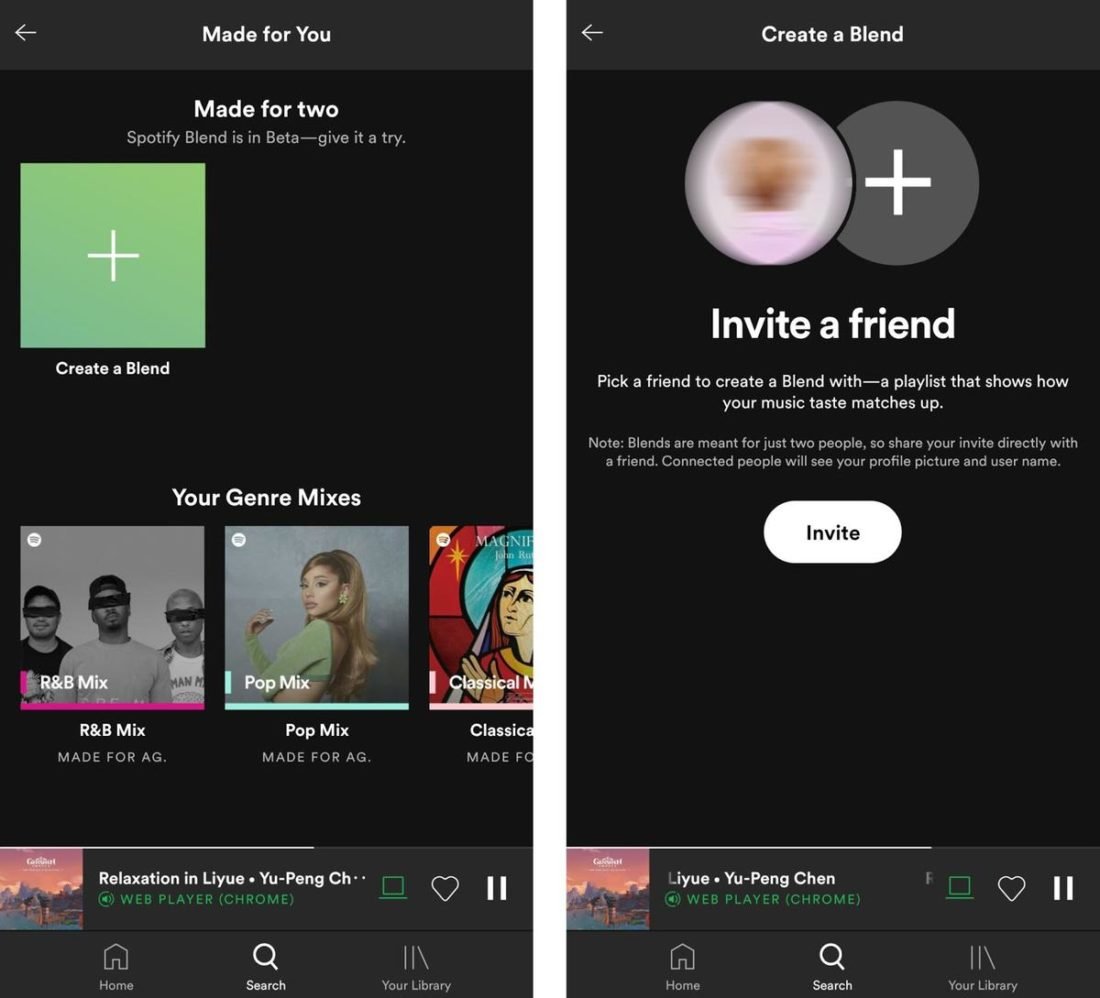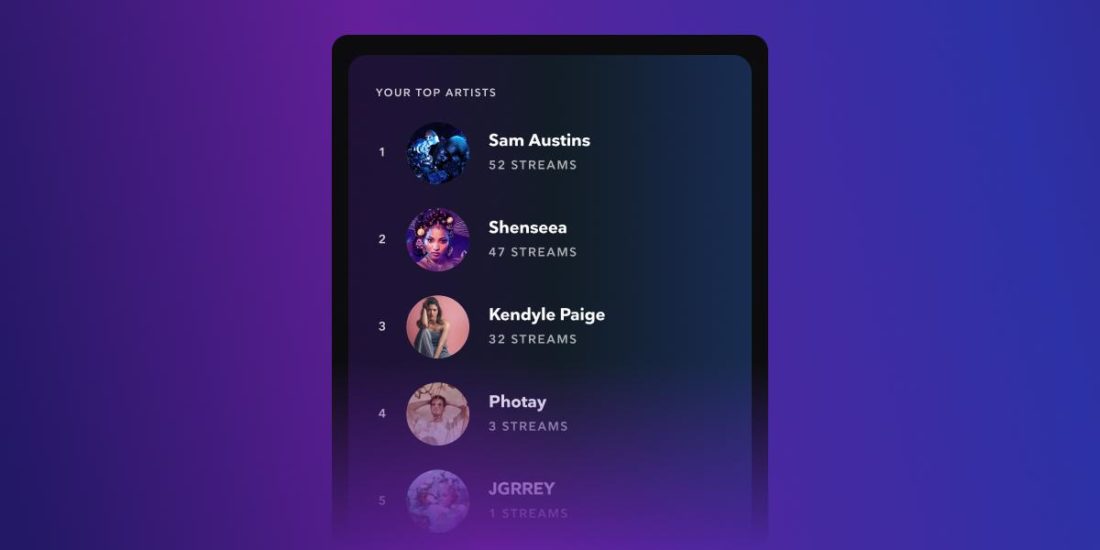Spotify is arguably the most popular streaming service globally, offering high-quality audio and an immense library containing music and a wide variety of podcasts. Though not as widely available, Tidal has a pretty good competitive edge thanks to lossless audio, podcasts, and video content. As such, it can be understandably difficult to choose between the two seemingly similar services. So, to help you reach a more straightforward answer, we’ve analyzed the different features of each app to see which one is worth your money. Let’s get to it!
The Overview
Spotify
Swedish entrepreneurs Daniel Ek and Martin Lorentzon began developing Spotify in 2006. The app was meant to solve music piracy and provide a convenient (and legal) means to access music. In October 2008, Spotify launched in select European countries. Three years later, it hit its first million subscribers. Today, this unassuming start-up is now the world’s biggest music streaming platform. As of February 2022, Spotify has 180 million paid subscribers and 406 million monthly active users. It’s also available in 184 countries.
Tidal
Tidal was developed by Aspiro, a Norwegian-Swedish tech company that also owns another music streaming service called WiMP. The two services were combined under the Tidal label, which eventually debuted in the UK, US, and Canada in 2014. In January 2015, Project Panther Bidco Ltd., a company owned by rapper Jay-Z, acquired Tidal. It was then launched in several more European territories and gained its first million subscribers eight months later. This number, however, was later contested and said to be closer to 350,000. In March 2021, Jay-Z and several of Tidal’s artist owners sold off most of their shares to Square Inc., a digital payments company. As a majority stakeholder, Square plans to “explore new artist tools, listener experiences, and access to financial systems that help artists be successful.” As of February 2022, Tidal is available in 61 countries. They’ve also been pretty tight-lipped about the subscriber count, but some roughly estimate it could be anywhere between 1-5 million subscribers.
Pricing & Plans
Spotify and Tidal have several similarities in pricing and features offered. But before we get into all the details, let’s take a quick look at how much each platform’s paid plans go for:
30-day free trial Ad-free, on-demand playback Over 80 million songs Access to all platform content Download option for offline listening
As mentioned earlier, there are key differences that set both platforms apart. If you’re determined to choose the best option possible, keep the following in mind:
Price difference for Family plans
Much like every other popular streaming platform in the industry, Spotify’s Family subscription plan used to go for $14.99. However, in April 2021, the company announced a price hike for US and UK Family plan subscribers, effectively bringing the price up to $15.99. According to Spotify, the increase is meant to bring in “new content and features that you can enjoy as a family and as individuals.” Tidal, on the other hand, retains the standard $14.99 price for their Family plan.
Local file support
Spotify allows you to import music files stored on your desktop device or phone and play them in the app. Tidal, however, does not offer this option.
Subscription plan options and perks
In addition to the Individual, Family, and Student plans, Spotify also offers a Premium Duo plan. The Duo plan is a budget subscription meant to be shared by two people. On the other hand, Tidal offers more discounted options with Military HiFi and HiFi Plus and First Responder HiFi and HiFi Plus. Aside from that, Spotify Premium also offers fun perks alongside some of their subscription plans. If you sign up for Premium Family, you get instant access to Spotify Kids, a separate platform that lets kids explore loads of kid-friendly content. If you sign up for Premium Student, you can also get ad-supported access to Hulu and SHOWTIME. Tidal, unfortunately, does not offer extras like these.
Additional HiFi Plus tier
In late 2021, Tidal did away with its Premium plan and made HiFi their new standard offering. It also introduced a HiFi Plus tier, which is by far the most notable difference between both platforms. Tidal’s HiFi tier gives listeners access to Standard (320 kbps) and HiFi (1,411 kbps) audio quality. And the HiFi Plus tier gives you Masters (9,216 kbps) audio quality and immersive audio. This makes Tidal an excellent choice for audiophiles or anyone using high-end audio gear. On the other hand, Spotify currently only goes up to 320 kbps at its highest audio quality setting.
Verdict: Which is more worth it?
Spotify, with its free plan and affordable paid plans, would’ve been a clear winner had Tidal not decided to revamp its subscription plans. But that isn’t the case. Tidal HiFi offers exceedingly better audio quality at the same price as Spotify’s Premium plan. It also has more subscription options, including a new free plan, making it a more flexible platform. It’s also worth noting that Tidal’s Family subscription is a dollar cheaper than Spotify, which could make a big difference for some penny-pinching folks.
Who Has Better Content?
Both platforms have sizable libraries, and both offer different types of content in addition to music. But is there a significant difference between the two? Let’s find out.
Amount of music content
Spotify
There’s an absolute plethora of content on Spotify, enough to satisfy the most niche listeners. Spotify’s library has over 82 million songs and is consistently expanding at an impressive rate of 60,000 songs a day. To date, the app covers 59 different music genres, which are curated across 4.5 billion playlists. There you’ll find everything from traditional Pop to Caribbean, Funk, Soul, and Bollywood. I personally like how there are entire genres dedicated to music for cooking, traveling, and even gaming. Plus, if you’re primarily a mainstream music fan, there’s certainly no shortage of popular hits for you. Spotify has licensing deals with the top record labels in the industry, such as Universal Music Group, Sony Music Entertainment, and Warner Music, ensuring that all the hottest music drops are made available on the platform. You can also explore playlists by Billboard, The Recording Academy, and Rolling Stone, which can be another great source of curated content. On the other hand, independent music fans will also be glad to know that Spotify has licensing deals with Merlin, home to as many as 20,000 indie labels and artists. Spotify’s Indie section is pretty exceptional, and I’ve found many great artists in its depths (Flook is a newfound fave). The indie section features 43 playlists, such as Indie Shuffle, Indie HipHop, Noisy, but a quick search will bring up even more.
Tidal
Like Spotify, Tidal has an equally massive library of 80 million songs. The entire collection, which can be found in the ‘Explore’ section, is categorized into 20 genres, which is a lot less than Spotify’s offerings. The genres span everything from Blues to Reggae. However, Hip-Hop fans will especially enjoy the platform’s (unsurprisingly) comprehensive Hip-Hop selection. The section features many additional playlists like Evolution, Respect the Classics, and Beats & Rhymes that really delve into the genre. Mainstream music lovers can easily find all the latest hits in Tidal’s ‘Top’ section. Here you’ll find playlists like Top Tracks, Top Albums, and The Charts, which showcase the most popular songs shaking up the airwaves all around the world. Additionally, those who enjoy reminiscing older hits can do so with Tidal’s Hall of Fame and Best of the Decade playlists. I particularly like how this section features themed playlists like 2010s Happy Songs and 2010s Sad Songs, in addition to the typical genre-focused ones. Lastly, independent music is also given equal prominence with Tidal Rising. This section is dedicated entirely to fresh talent and features playlists devoted to various genres, new tracks, new albums, and artists.
Content variety
Spotify
Aside from music, Spotify also offers a wide selection of original and exclusive podcasts. The collection amounts to 3.6 million titles, thanks to acquisitions of several podcast production companies such as Anchor, Gimlet Media, The Ringer, and Parcast. Spotify’s podcast library includes popular shows like Dax Shepard’s Armchair Expert, The Joe Rogan Experience, and The Michelle Obama Podcast. The most recent addition is Alex Cooper’s Call Her Daddy, which Spotify acquired for $20 million. While Spotify may have backed away from album exclusives, they haven’t taken that stance with podcasts. In 2020, Spotify teamed up with Riot Games to become its official streaming partner for all League of Legends events. The partnership also brought in new exclusive esports content, like Rift Reaction, The Dive – A League of Legends Esports Podcast, and Untold Stories: Top Moments From Worlds. In addition to podcasts, Spotify is also making headway in the audiobooks arena with the acquisitions of Storytel, a Swedish audiobook subscription service, and Findaway, a leading audiobook distributor.
Tidal
Tidal likewise offers podcasts, though markedly less than what Spotify does. The entire podcast collection amounts to 25 titles, including long-running shows like Broken Record, And The Writer Is…with Ross Golan, and Talk Art. Unlike Spotify, however, Tidal has an extensive video collection that includes everything from music videos, talk shows, interviews, album commentaries, and documentaries. Tidal even goes a step further by offering subscribers access to virtual reality concerts. With help from Oculus VR technology, listeners can enjoy live performances with friends via the Venues app.
Verdict
When it comes to the amount of music content, both Spotify and Tidal are pretty much equal. Both platforms have extensive libraries, both have good selections of popular and independent music to satisfy all music fans, and both feature well-curated playlists. Yet, in terms of content variety, Tidal outdoes Spotify by a small margin. Both platforms offer original and exclusive podcasts, and yes, Spotify offers a bit more with audiobooks. However, the addition of video content makes Tidal a more worthwhile investment. It’s particularly appealing for music fans who enjoy watching documentaries and behind-the-scenes content, and are interested in gaining deeper insight into their favorite artists and music.
Audio Quality
Spotify offers five audio quality settings, while Tidal offers four. Here’s what the bitrate distribution looks like for each quality setting: At its highest audio quality setting, Spotify consumes about 150MB of data per hour. That’s about 7 to 8 MB per song. At that rate, playback is smooth and quick to load between track skips, despite me having a lower-than-usual network speed of 49 Mbps. As for Tidal, the app uses AAC for its ‘Standard’ audio quality setting. For its HiFi and Master audio quality settings, Tidal defaults to FLAC and MQA, which are hi-res lossless formats that deliver close-to-original sound quality. This is even more true for Tidal’s Master quality setting, which adds a whole new level of depth, clarity, and richness to music tracks. Given Tidal’s high-quality audio, it’s no surprise that the app is a monster data consumer. Tidal’s HiFi plan can eat through 635 MB per hour, while Tidal HiFi Plus guzzles anywhere from 1.35 GB to 18.20 GB per hour. On good days, playback is generally smooth on Tidal. But on days when my connection is inconsistent, there’s noticeably more buffering than usual when skipping tracks. Aside from a good internet connection, you’ll also need headphones that can support audio resolutions of up to 24 bit/352 kHz to get the most out of Tidal Masters. In addition, Tidal’s MQA format also requires additional hardware such as an MQA Renderer or MQA-enabled DAC that can decode the audio data properly, allowing you to hear your music exactly the way it was recorded.
Verdict: Which is more worth it?
Spotify offers more audio quality settings, including a ‘Low’ quality setting of only 24 kbps for those who want to conserve their data plans. However, Tidal takes this round hands down with its HiFi and Master audio quality settings. It’s undoubtedly pricier, but for those who appreciate pristine audio quality and enjoy hearing all the fine details in their music, it’s money well spent. Spotify was supposedly set to offer lossless audio quality sometime in 2021. But because of licensing issues, the feature has been temporarily pushed back.
Music Discovery
An essential part of every music streaming app is a discovery feature that helps listeners find new artists and music. Here are the features on Spotify and Tidal that’ll help you do just that:
‘Release Radar’ and ‘Discover Weekly,’ which offer up fresh music every week. Tastebreakers, which suggests tunes from artists and genres you don’t usually listen to. Mixes like ‘Your Daily Mixes’ and ‘Your Genre Mixes’ are playlists that combine songs already in your library and new ones that the algorithm thinks you’ll like.
Tidal, on the other hand, places more emphasis on human curation and hand-crafted playlists. It offers personalized playlists, such as ‘My Daily Discovery’ and ‘My Mix,’ though much fewer in number than Spotify. Spotify’s ‘Search’ and Tidal’s ‘Explore’ sections are both remarkably similar. Both have sections for new releases, worldwide charts, and mood playlists. Both also feature sections dedicated to promoting independent, up-and-coming talent called RADAR and Tidal Rising.
Both platforms also offer recommendations within user-created playlists, which is a convenient and quick way to hear new songs without browsing through other playlists. This is one of my more frequently-used features on Spotify, and I was pleasantly surprised to see that Tidal was able to give me some equally great recommendations as well. Artist profiles on both platforms also feature a ‘Fans Also Like’ section, which helps listeners discover artists with similar music styles. Tidal, however, takes it one step further with ‘Influencers,’ which I’ve interpreted as an “artists that have inspired me” section.
Verdict
Both platforms offer similar ways for listeners to discover new music. However, Spotify takes this category based on a stronger emphasis on personalization and the amount of personalized content it provides. Does that mean Tidal is bad at music discovery? Not at all. But with the sheer number and variety of editorial playlists available on Spotify, it definitely feels like you’re getting more bang for your buck.
Ease of Use
Tidal and Spotify have similar dark-themed designs on their mobile and desktop apps. The user functions are accessible, making both platforms relatively easy to use.
Both desktop apps feature a sidebar that houses links to the main sections, your library, and your created playlists. For mobile app users, that same navigation bar can be found at the bottom of the screen. Both desktop platforms have a drag-and-drop function, making it easier to add songs or albums to playlists from wherever you are on the app. Both also have detailed drop-down menus that let listeners do a variety of actions. Spotify’s ‘Your Library’ has a dedicated section with content filters that lets you sort your collection by playlist, artist, album, or podcast. Users can find these filters on the mobile app as well. Alternatively, Tidal’s ‘My Collection’ filters are entirely visible on the sidebar, which may be more straightforward for some users.
Tidal’s artist profiles are a little more comprehensive. In addition to the artist’s discography and playlists, there’s a ‘Social’ section at the bottom, making it easy to check out or follow an artist’s social accounts. You’ll also find quick links in the main banner that take you directly to ‘Artist Radio,’ ‘Credits,’ and other functions. Last but not least, Tidal’s audio quality button is another nice feature that I particularly like. The button allows you to check or change your audio quality without going into app settings. You can toggle it from the ‘Now Playing’ bar on desktop and at the top of the ‘Now Playing’ screen on mobile.
Verdict: Which is more worth it?
As mentioned earlier, both apps are easy to use, even for those who aren’t that familiar with them. Both apps’ interface is minimalistic and straightforward. And with all the necessary functions visible and accessible, it’s pretty easy to get your bearings and navigate the app.
Additional Features
Both platforms have some interesting extra features to offer music fans.
Yearly Wrap-ups
A popular favorite among Spotify users is ‘Wrapped,’ which gives you a yearly summary of how you’ve listened to music. The feature was such a hit that Spotify has added another feature called ‘Only You.’ Dubbed as an “audio birth chart,” Only You celebrates the unique musical choices that define you as a music listener. Both ‘Wrapped’ and ‘Only You’ can be shared with friends on social media, making for some fun exchanges. On the other hand, Tidal currently doesn’t have any personalized features like these.
Social Features
Tidal’s social features are also limited to sharing tracks on Facebook and Instagram. It’s a missed opportunity, but better than nothing, I guess. On the other hand, Spotify offers several ways to share playlists with your friends. You can host a listening party with up to five friends with Group Session or collaborate on playlists together. You can also create a Blend if you’re curious to see how your music taste matches up with a friend’s. Tidal, unfortunately, doesn’t offer any collaborative features like these, which again feels like a missed opportunity.
Unique experiences & Virtual Content
On the upside, there are unique experiences to be found on Tidal. Listeners can enjoy essays and articles on everything music-related with Tidal’s online magazine. Featured write-ups can be found in the app, making it easy for listeners to jump straight to a web browser if they want to read more.
While Spotify has a Behind the Lyrics feature that delivers artist stories and trivia, Tidal goes beyond with album commentaries, documentaries, contributor mixes, and an incredibly comprehensive song credits feature, making it a haven for true blue music lovers. Both platforms offer live-streamed concerts as well. Spotify has only recently launched this feature with a series of virtual concerts that took place from May to June 2021. On the other hand, Tidal is a bit more seasoned in providing virtual content. Through Tidal X and a partnership with Oculus, subscribers get exclusive access to events, live performances, and meet-and-greets. Another recently added feature is My Activity, which is only available on mobile devices. This offers daily insights into your streaming habits and tells you which artists are receiving royalties from you. You can share your streaming activity with other friends on the app and view your listening history to see how your music listening habits change and evolve.
Verdict: Which is more worth it?
Both apps provide a lot of great extra content for subscribers. Some may prefer Spotify’s emphasis on the social aspect of music listening and enjoy the different ways music can be shared with friends. And others may like how Tidal focuses more on unique, exclusive content and fan experiences. Having a unique feature that lets you see which artists are benefitting from how you listen to music may also be a huge draw for you. Ultimately, the choice will depend on what your personal tastes are as a listener.
How Much Do Spotify and Tidal Pay Artists?
There’s a significant difference between Spotify and Tidal when it comes to royalty payouts. Spotify pays an average of $0.0033 per stream, one of the lowest in the music streaming industry. And Tidal pays one of the highest rates at $0.12 per stream. However, this doesn’t end with just the pay-per-stream rates.
Calculations of royalties
According to Spotify, the reason for the low payout average is partly due to how they calculate royalties. For instance, Spotify factors in streams from free accounts, which generate lower revenue than Premium accounts. The service also tends to be more popular in countries with lower subscription rates. To illustrate, countries like Brazil, Mexico, the Philippines, and Argentina all made it into a list of Spotify’s top 2o markets. More importantly, all of these countries have Premium Individual subscription rates of $5 or less. As for Tidal, they calculate royalties based only on HiFi Plus accounts, which also happen to have much higher subscription rates.
MCPS vs UCPS
Like Deezer, Tidal has also introduced a User-Centric Payment System (UCPS), whereas Spotify uses a Market-Centric Payment System (MCPS). This means that instead of pooling together all revenue across the app, Tidal’s distribution of revenue is centered more around the user’s listening habits. Tidal’s new payment system is implemented in two ways:
Direct Artist Payouts: This allocates as much as 10% of your HiFi Plus subscription fee directly to the artists you listen to the most.
Fan-Centered Royalties: This allocates royalties generated by HiFi Plus subscribers to artists they stream the most in any given month.
Direct Artist Payouts and Fan-Centered Royalties were launched in 2021 and 2022, respectively. Both are designed to give artists a more sustainable way of earning that allows them to live off their craft.
Verdict
Tidal is an easy choice in this category. Though they do charge higher rates for their HiFi Plus plans, their shift to UCPS makes it clear that your money is benefitting artists you care about. And with the My Activity feature mentioned earlier, fans are able to check where their streams are going to, effectively giving them more influence over who benefits from their subscription payments. Ultimately, it’s a step towards more transparency that shows Tidal is intent on making music streaming a feasible source of income for artists.
Which Should You Go For?
Before we get to our final verdict, here’s a summary of everything awesome you can get from both platforms: Prior to Tidal’s revamping of its subscription plans and payment system, both apps were quite evenly matched. Unfortunately, this latest overhaul seems to have left Spotify in the dust. Spotify is still a good platform and a practical choice for those who aren’t too picky with music quality and are on a budget. It’s great for music discovery and is a good option for those who wish to integrate their personal music files into a music streaming app. Those who live for podcasts will also get great satisfaction from Spotify’s massive collection. As for Tidal, what was once probably seen as an expensive and impractical choice, is now the exact opposite. Tidal not only offers a free plan, but also high-resolution audio at more affordable prices. It offers in-depth music content that appeals to a specific type of music fan who loves consuming everything about music. Tidal also offers ways to fully engage with the artists they love, the music, the stories, and the creative process. And at the same time, gives listeners the option of supporting artists directly. With Tidal, it’s pretty much a win-win situation.
Conclusion
In sum, both apps have great things to offer in their own way. Spotify is more about personalization, and caters more to the individual and what they want to hear and share with the world. And that’s perfectly fine if that’s the music app experience you enjoy. Tidal, however, fosters connections between artists and fans. And they do this by highlighting their stories and body of work, among many other things. Hopefully, our analysis has brought some things to light that will help you in your decision. If not, there’s always the option of a 30-day free trial to get a better sense of both apps. Do you have any thoughts regarding these two apps? If so, we’d love to hear about it in the comments section. And who knows, someone else might find your experience helpful too.



